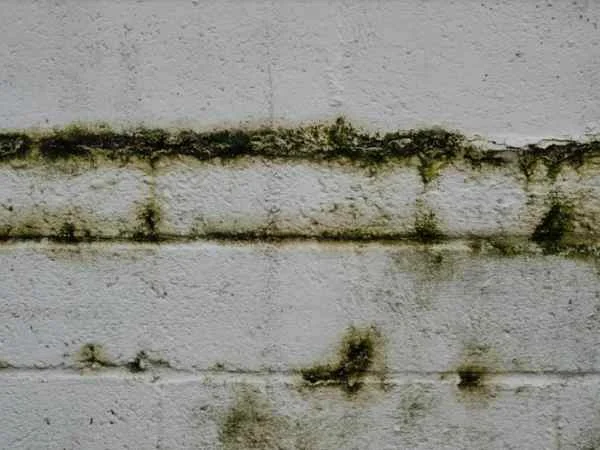Mold growth in your home isn’t just unsightly, it can also pose significant health risks to you and your family. If mold is allowed to grow, it can cause allergic responses and respiratory problems, among other negative effects on your health. It’s critical to comprehend the health hazards associated with mold development to take preventative action to protect your home environment. This comprehensive guide will explore five health risks associated with mold growth in your home and provide expert advice on how to address them effectively, ensuring a safe and healthy living space for you and your loved ones.
1. Respiratory Problems
Respiratory issues are among the most frequent health hazards associated with mold development. When breathed, mold spores can become airborne and irritate the respiratory system, resulting in symptoms including coughing, wheezing, tightness in the chest, and irritation of the throat. People who already have a respiratory ailment, such as asthma or chronic obstructive pulmonary disease (COPD), are more vulnerable to exacerbations caused by mold exposure. Extended contact with mold spores can also result in sinusitis, bronchitis, and respiratory illnesses. Improving indoor air quality and lowering the risk of respiratory issues require swiftly addressing mold development.
2. Allergic Reactions
Strong allergens like mold can cause allergic responses in those who are susceptible. Sneezing, a runny or clogged nose, itchy eyes, skin rashes, and hives are typical signs of mold allergies. Mold allergies can have a serious adverse effect on quality of life by creating pain and making everyday tasks more difficult. When mold allergens are exposed to high levels, it can cause allergic asthma, which is defined by asthma symptoms brought on by allergens such as mold spores.
When exposed to high concentrations of mold or spending time in moist, moldy conditions, those with mold allergies may notice an aggravation in their symptoms. It’s critical to address moisture concerns, enhance ventilation, and quickly undertake mold remediation methods to prevent allergic responses associated with mold development.
3. Skin Irritation and Dermatitis
For those who are vulnerable, mold exposure can also result in dermatitis and skin irritation. Mycotoxins or mold spores can trigger allergic skin responses that result in rash development, redness, swelling, and itching. Without a comprehensive examination, mold-related skin problems can resemble other allergic skin conditions, making diagnosis difficult. People who already have dermatological diseases like psoriasis or eczema or who have sensitive skin can be more vulnerable to mold-induced skin irritation. Preventing skin irritation and dermatitis requires addressing mold development and reducing exposure to mold spores.
Skin responses can be decreased by following good hygiene procedures, such as frequently washing hands and cleaning impacted areas. Furthermore, minimizing skin contact with mold allergies during mold cleanup tasks can be achieved by using protective clothes, such as gloves and long sleeves.
4. Headaches and Fatigue
Mold exposure can also cause non-respiratory symptoms, including weariness and headaches. Headaches, lightheadedness, weariness, and cognitive impairment are among the neurological symptoms associated with mold-related disorders, including toxic mold syndrome. The intake or inhalation of mycotoxins generated by certain mold species, such as Stachybotrys chartarum (black mold), can result in these symptoms. Mycotoxins have been linked to several harmful health outcomes, such as immunological suppression and neurological problems. To lower the possibility of developing mold-related neurological symptoms, it is essential to address mold development and minimize exposure to mycotoxins.
Seeking medical attention and consulting with a water restoration company specializing in mold remediation can help identify and mitigate the underlying causes of mold-related health issues, promoting recovery and restoring a healthy indoor environment.
5. Aggravation of Existing Health Conditions
Mold exposure can worsen symptoms and cause challenges for those who already have medical concerns. Health problems associated with mold can exacerbate respiratory disorders like COPD and asthma by escalating the frequency and intensity of symptoms. Furthermore, mold exposure can weaken the immune system, increasing a person’s susceptibility to infections and diseases. Individuals with weakened immune systems, like the elderly, kids, and those with underlying medical issues, are more vulnerable to the negative effects of mold exposure. To safeguard vulnerable populations and avoid aggravating pre-existing medical disorders, it is essential to control the development of mold and reduce exposure to mold spores.
Working with a trustworthy water restoration business can help develop a cleanup strategy specifically tailored to your needs, guaranteeing complete mold eradication and preventing future recurrences.
Conclusion
In conclusion, understanding the health risks associated with mold growth in your home is essential for protecting yourself and your family. Mold exposure can have a wide range of adverse effects on your health, from neurological symptoms and skin irritation to respiratory issues and allergic responses. By addressing mold growth promptly and implementing effective remediation measures, you can mitigate the health risks associated with mold exposure and create a safe and healthy indoor environment for everyone.

